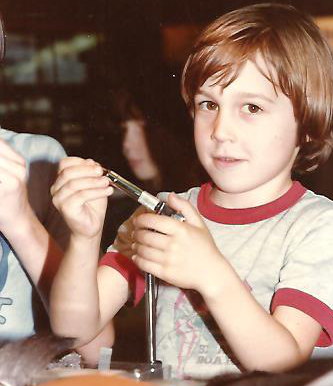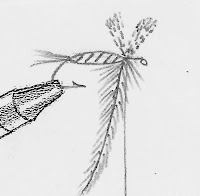 |
| Del Cooper |
 |
| Del Cooper Tying a Fly |
There are conflicting stories regarding the development of this fly, which became a favorite steelhead fly on the Deschutes River. One account says that an Oregon doctor tied it up and called it the Surgeon General in honor of his friend who was surgeon. Another story came from Jerry Todd, a guide on the Deschutes, who asked Del Cooper to tie a variation of the Skunk Fly that would impress a doctor that he was going to guide. It turned out to be a very successful pattern, which sometimes is erroneously called the Surgeon General. In time, the oversight was rectified and called the Del Cooper.
Materials:
Hook: Mustad 36890, sizes 4-6
Thread: Black 3/0
Tail: Red hackle fibers
Body: Purple wool
Rib: Medium silver oval tinsel
Hackle: Red saddle
Wing: White calftail or polar bear
Step 1. Tie in the tail hackle fibers, tinsel and the purple wool.
Step 2. Wrap the purple wool forward and follow
with 5 to 6 wraps of tinsel. Tie in the saddle hackle.
Step 3. Wrap 3-4 turns of hackle, and select a small
bunch of calftail. Tie the wing in place with 8-10 wraps.
Step 4. Tie off the head neatly and cement.






















